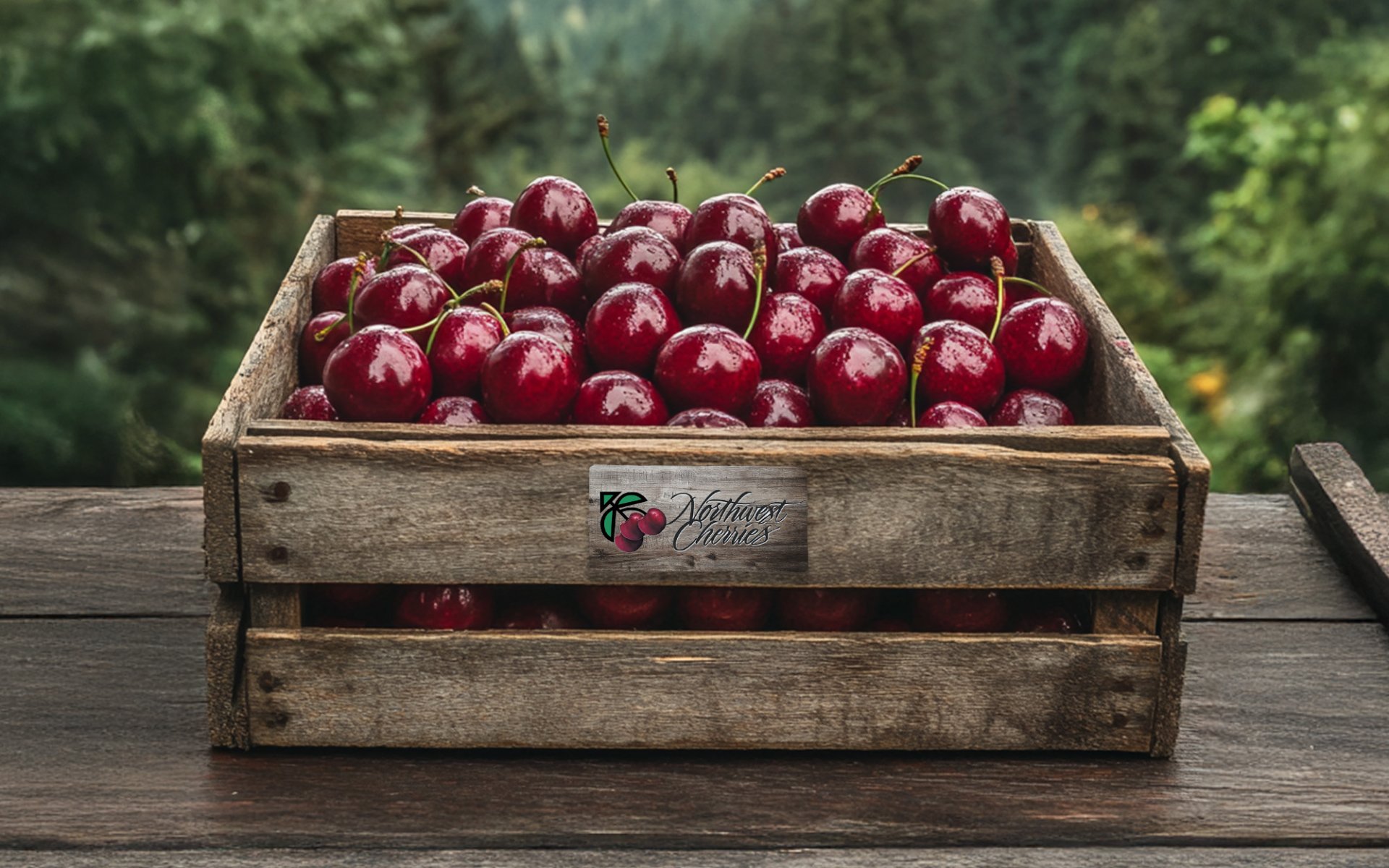Northwest Cherries

Northwest Cherries are highly popular fruits from the Northwestern region of the United States, covering the states of Washington, Oregon, Idaho, Utah, and Montana.
Cherries from this region are renowned for their sweet, crisp, and fresh taste, widely acknowledged as the highest quality cherries in the global market. These excellent yields result from the expertise and dedication of over 2,500 farmers who collectively produce premium quality cherries for export worldwide.
From Europe to the Northwest: The Dawn of the Cherry Industry
The journey of cherries to North America began during the 17th and 18th centuries when European immigrants settled in the region, bringing European cherry trees with them. However, initially, cherries were not widely cultivated for commercial purposes.
Nevertheless, in the mid-19th century, Henderson Lewelling, hailed as the Father of the Northwest Fruit Industry, traveled across the country from Iowa to Oregon. He brought various fruit tree saplings, including cherry trees, with him. He then began cultivating cherries for the first time in 1847. This marked the beginning of the cherry industry in the Northwestern United States.
In the late 19th and early 20th centuries, the cherry industry in this region grew rapidly. Commercial cherry cultivation continuously increased, and farmers began to learn and understand the needs of cherry trees, as well as cultivation methods to ensure the best quality produce.
Prominent Varieties : Bing, Rainier, and Lapins
One of the most significant developments was the breeding of new cherry varieties suitable for the region's climate, such as Bing, a highly popular and globally recognized variety.
Bing is characterized by its large size, deep red color, firm flesh, and intense sweetness, making it highly sought after in the market. It was developed by a Chinese craftsman named Ah Bing, who was an assistant to Seth Lewelling, Henderson Lewelling's nephew, in the late 1870s.
In addition to the Bing variety, other interesting varieties include Rainier, a bi-colored pink-yellow cherry with a delicately sweet taste, and Lapins, a deep red, juicy cherry resistant to cracking. Each variety has played a crucial role in increasing the diversity and value of the cherry industry in this region.
Harvesting and Benefits of Northwest Cherries
Northwest Cherries are harvested only once a year, with the harvest season beginning from late June to mid-August. Each cherry is hand-picked in the morning before sunrise to maintain maximum freshness and quality. After harvesting, they are quickly sorted and packed within 48 hours before reaching consumers worldwide.
Each year, Northwest Cherries produce up to 20-21 million boxes, with each cherry tree yielding up to 7,000 fruits per season.
Northwest Cherries are not just delicious; they are also rich in nutrients and numerous health benefits, such as:
- Antioxidants: Help prevent heart disease and slow down cell degradation.
- Anthocyanins: Reduce inflammation and relieve joint pain.
- Melatonin: Helps regulate sleep cycles.
- High in fiber, promoting a healthy digestive system.
- Northwest Cherries can be enjoyed fresh or used in a variety of dishes and desserts, such as cherry pies, smoothies, or salads.
They can also be frozen, dried, or made into cherry juice. To preserve freshness and extend shelf life, cherries should be refrigerated immediately after purchase.
Currently, Northwest Cherries are exported to many countries worldwide, including Thailand. During this harvest season, you can find Northwest Cherries at all Rimping branches.


